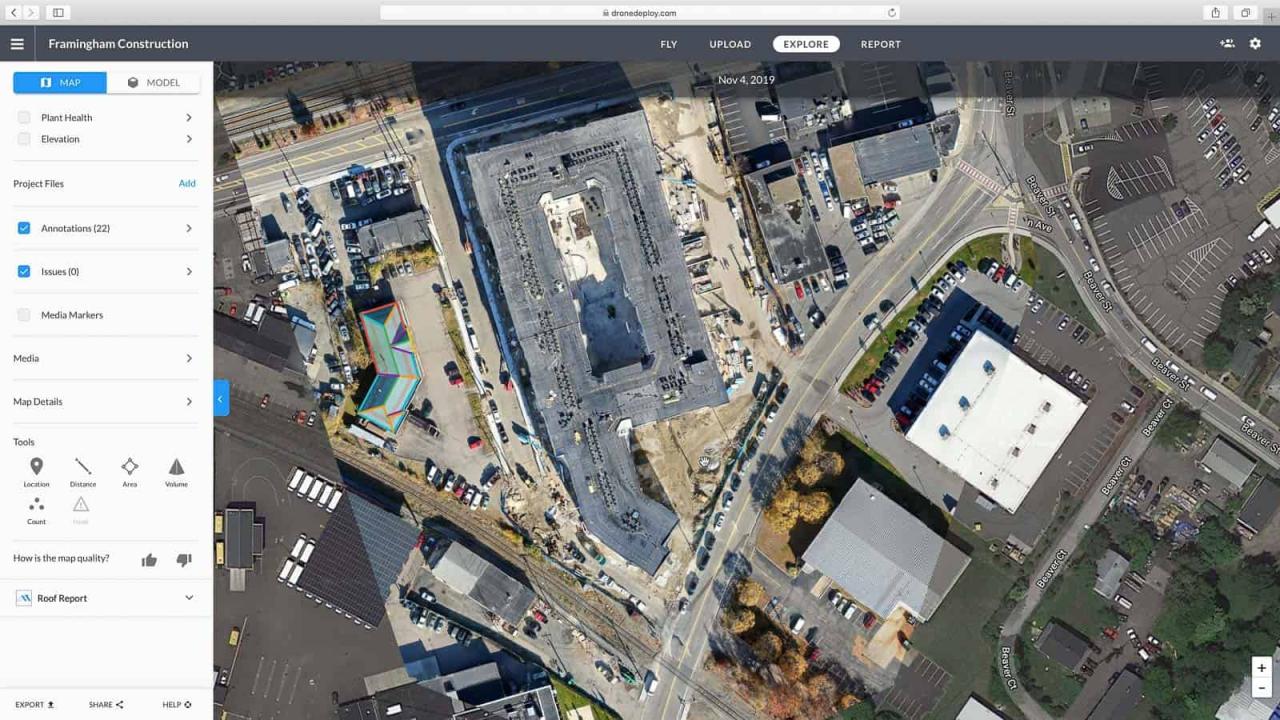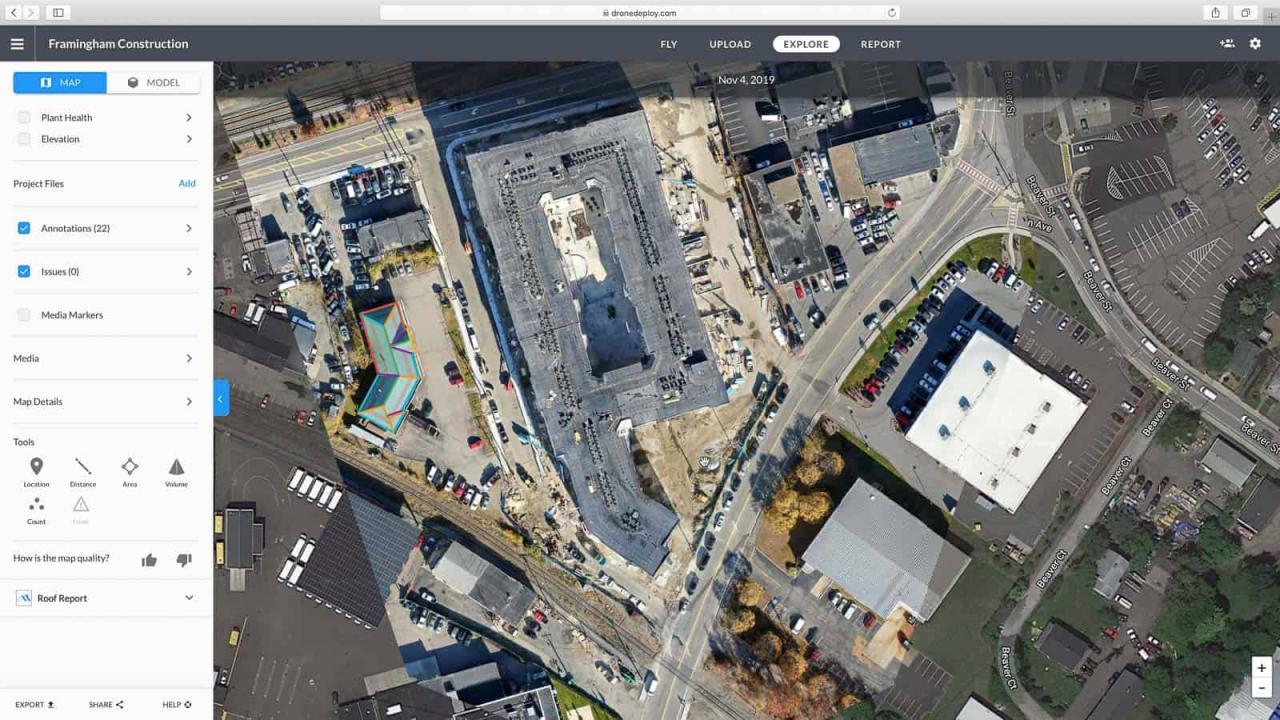How to use drone deploy – How to Use DroneDeploy unlocks the power of aerial data acquisition and analysis. This guide takes you from setting up your account and connecting your drone to processing data and generating insightful reports. We’ll cover everything from planning efficient flight paths to utilizing advanced features for optimal results, ensuring you confidently harness the capabilities of DroneDeploy for your projects.
Get ready to explore the world from a new perspective!
We’ll walk you through each step, from choosing the right subscription plan and connecting your drone to the app, to planning your flights, capturing high-quality imagery, and processing that data into actionable insights. We’ll also tackle troubleshooting common issues and explore advanced features to help you become a DroneDeploy pro.
Getting Started with DroneDeploy
DroneDeploy simplifies drone data collection and analysis. This section covers account creation, drone connection, and understanding subscription plans.
DroneDeploy Subscription Plans
DroneDeploy offers various subscription plans catering to different needs and budgets. These typically include features like flight planning, data processing, and storage capacity. Basic plans offer essential functionalities, while more advanced plans unlock features like high-resolution processing, larger data storage, and advanced analytics tools. Check the DroneDeploy website for the most up-to-date pricing and feature details.
Creating a DroneDeploy Account
- Visit the DroneDeploy website and click on “Sign Up”.
- Enter your email address and create a strong password.
- Fill in the required information, such as your name and organization.
- Check your email inbox for a verification link and click it to activate your account.
Connecting Your Drone
Connecting your drone depends on the drone model. Generally, it involves installing the DroneDeploy mobile app, enabling Bluetooth or Wi-Fi on your drone, and following the in-app instructions to establish a connection. The app will guide you through the specific steps for your drone’s make and model.
Planning Your Drone Flight
Careful planning is crucial for a successful drone flight. This includes designing a flight plan, considering weather and airspace, and configuring flight parameters.
Designing a Flight Plan
Use DroneDeploy’s intuitive mapping tools to define your area of interest. Specify the altitude, desired image overlap (typically 70-80% for optimal data processing), and flight speed. The software will automatically generate a flight path optimized for efficient data capture.
Weather and Airspace Considerations
Before flying, check the weather forecast for wind speed, precipitation, and visibility. Ensure your flight complies with local airspace regulations and obtain necessary permissions if required. DroneDeploy may integrate with services providing real-time airspace information.
Setting Flight Parameters, How to use drone deploy
Within DroneDeploy, configure your camera settings, such as image resolution, shutter speed, and ISO. Higher resolution images provide more detail but require more storage and processing time. Experiment to find the optimal balance between image quality and processing efficiency for your project.
Getting started with DroneDeploy is easier than you think! First, you’ll want to set up your account and connect your drone. Then, you’ll plan your flight path using the intuitive interface. Check out this super helpful guide on how to use DroneDeploy to learn more about mission planning and data processing. After your flight, DroneDeploy will automatically process your images, creating stunning maps and 3D models.
Mastering how to use DroneDeploy opens up a world of possibilities!
Executing the Drone Flight
This section details the steps involved in launching, operating, and troubleshooting potential issues during your drone flight.
Launching and Operating Your Drone

- Ensure your drone’s battery is fully charged and the GPS signal is strong.
- Launch the DroneDeploy app and initiate the pre-flight checklist.
- Follow the on-screen instructions to start the automated flight. The app will guide the drone along the planned flight path.
- Monitor the flight progress on the app, paying attention to battery levels and GPS signal strength.
- Upon completion, safely land your drone and review the flight data in the app.
Handling Flight Issues
- Low Battery Warning: Immediately initiate a return-to-home procedure.
- GPS Signal Loss: Land the drone safely; ensure a clear view of the sky for optimal GPS reception.
- Other Issues: Consult the DroneDeploy support documentation or contact support for assistance.
Pre-Flight and In-Flight Safety Checklist
A thorough checklist helps ensure a safe and successful flight. Always prioritize safety. Typical checklist items include battery checks, GPS signal strength verification, weather conditions assessment, airspace clearance, and emergency procedures understanding.
Processing and Analyzing Data: How To Use Drone Deploy
After the flight, upload your data to DroneDeploy for processing. Various processing options are available, each affecting data quality and processing time.
Uploading Flight Data
Connect your drone or import the flight data via SD card. The app will automatically upload the images to the cloud for processing.
Processing Options
DroneDeploy offers different processing options such as standard, high-resolution, and advanced processing. Higher-resolution processing results in better image quality but takes longer. The choice depends on project requirements and budget.
Creating Maps and Reports
Once processing is complete, generate various outputs including orthomosaics, 3D models, and measurements.
| Map Type | Uses | Advantages |
|---|---|---|
| Orthomosaic | Site surveys, construction progress monitoring, agriculture | High-resolution, georeferenced image mosaic |
| 3D Model | Volume calculations, terrain analysis, visualization | Accurate representation of the terrain and objects |
| Measurements | Area calculations, distance measurements, height analysis | Precise and accurate measurements directly from the imagery |
Sharing and Collaborating
DroneDeploy facilitates easy sharing and collaboration. This section explores different sharing methods and their associated permissions.
Sharing Data and Reports
Share processed data and reports with clients or colleagues using various methods, ensuring only authorized individuals have access. DroneDeploy offers various permission levels to control access.
Collaboration Features
DroneDeploy supports team collaboration through shared projects and comment features. This allows multiple users to work together on a project and provide feedback.
Comparison of Sharing Options

- Public Link: Anyone with the link can access the data; limited control over access.
- Shared Project: Controlled access to specific users or teams within DroneDeploy; better control and collaboration features.
- Download: Allows downloading data in various formats; users can access data offline but lacks real-time collaboration.
Advanced Features of DroneDeploy
DroneDeploy offers advanced features that enhance efficiency and accuracy. This section explores automated flight planning, terrain following, and data analytics.
Automated Flight Planning
DroneDeploy’s automated flight planning tools significantly reduce manual effort and ensure consistent data collection. Simply define the area, and the software generates an optimized flight path.
Terrain Following
This feature enables your drone to maintain a consistent altitude above the ground, even on uneven terrain. This is especially useful for surveying challenging landscapes.
Planning your drone flight is key, and DroneDeploy makes it easy. First, you’ll need to set up your account and connect your drone. Then, you’ll define your flight plan; it’s super intuitive. Check out this awesome guide on how to use DroneDeploy for a step-by-step walkthrough. After that, you can process your images and generate stunning maps and 3D models.
Mastering DroneDeploy opens up a world of possibilities!
Data Analytics Tools
DroneDeploy provides advanced analytics tools, allowing users to extract valuable insights from their data. These tools can be used for tasks such as volume calculations, change detection, and vegetation analysis.
Creating a 3D Model from a Point Cloud

- Upload your processed data to DroneDeploy.
- Select the “3D Model” option from the processing menu.
- Choose the desired settings for the 3D model (resolution, texture, etc.).
- DroneDeploy will process the data and generate a 3D model which can then be viewed and downloaded.
Troubleshooting Common Issues
This section addresses common issues encountered while using DroneDeploy and provides solutions.
Common Issues and Solutions
- Connectivity Problems: Check your internet connection, restart your device, and ensure your drone is properly connected.
- Processing Errors: Review the error messages, check data integrity, and contact support if necessary.
- Data Integrity Issues: Ensure proper image overlap, good weather conditions during flight, and review the flight logs for any anomalies.
Best Practices
Regular software updates, proper drone maintenance, and adherence to safety protocols are essential for preventing issues and maintaining data integrity.
Illustrative Example: Site Survey
Let’s consider a hypothetical site survey project for a new building construction. Using DroneDeploy, the process would involve planning a flight path encompassing the entire site, capturing high-resolution imagery, and processing the data to generate an orthomosaic and a 3D model.
Project Details
The orthomosaic would provide a detailed, bird’s-eye view of the site, showing existing structures, vegetation, and terrain features. The 3D model would offer a three-dimensional representation of the site, allowing for accurate volume calculations and terrain analysis. This data would inform decisions regarding site preparation, foundation design, and building placement. The resulting maps would clearly depict the site’s topography, identifying potential challenges or opportunities for construction.
Benefits of Using DroneDeploy
Compared to traditional surveying methods, DroneDeploy offers significant advantages in terms of speed, efficiency, and cost-effectiveness. It reduces the time and labor involved in data acquisition, and the resulting data is highly accurate and readily accessible.
Data-Driven Decisions
The detailed imagery and measurements derived from DroneDeploy’s analysis would enable informed decisions regarding site grading, utility placement, and overall project planning, ultimately minimizing risks and optimizing the construction process.
Mastering DroneDeploy empowers you to capture stunning aerial imagery and transform it into valuable data. By following this guide, you’ve learned to plan efficient flights, process your data effectively, and generate insightful reports. Remember to explore the advanced features to further optimize your workflow and unlock even more potential. Now go forth and map the world!
Essential Questionnaire
Can I use DroneDeploy with any drone?
DroneDeploy supports a wide range of drones; however, compatibility varies. Check their website for a list of supported models before purchasing.
What if I lose GPS signal during a flight?
DroneDeploy’s app will alert you. If possible, try to bring the drone back to a location with a strong signal. If not, the drone will usually attempt to return to its home point.
How much storage space do I need for DroneDeploy?
The storage needed depends on the size of your projects and the resolution of your imagery. Cloud storage is used, so you don’t need massive local storage, but larger projects will require more cloud space.
What types of reports can I generate?
DroneDeploy allows for orthomosaics, 3D models, digital surface models (DSMs), point clouds, and various measurements depending on your project needs.
Is DroneDeploy only for professionals?
While professionals use it extensively, DroneDeploy is accessible to anyone interested in aerial imagery and data analysis, from hobbyists to small businesses.
